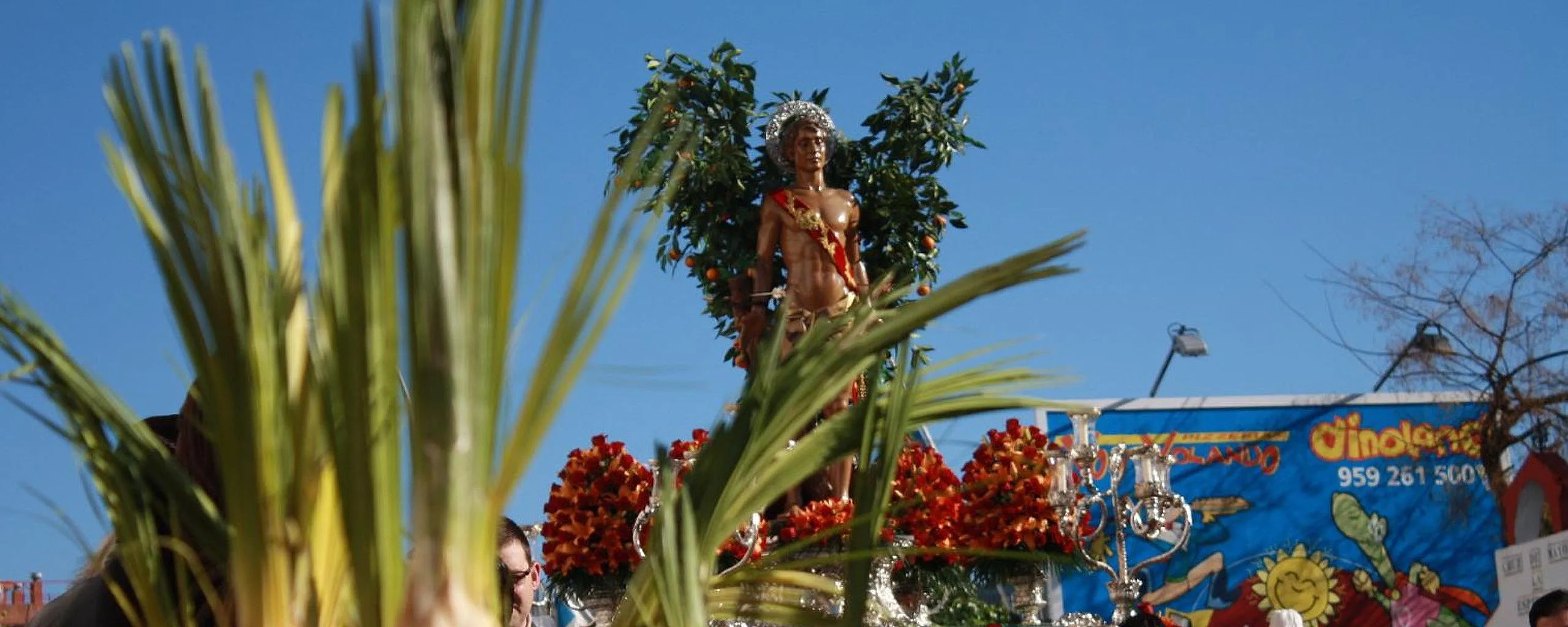The celebration of the festivities in honor of San Sebastián, patron saint of Huelva, is a rich exponent of the enormous wealth of heritage that is treasured in our land. The procession of the Saint has an oscillating date each year coinciding with the Sunday after January 20.
The route runs through the city centre, through the streets of the old San Sebastián neighbourhood, lined with balconies decorated with huge vegetables, which are the subject of an interesting popular competition, and street stalls selling palm hearts.
At the same time, a series of events take place in different parts of the city, such as the musical performances in the Alonso Sánchez Park, the “cacharritos” in the Avenida de Andalucía and the popular tastings of typical Huelva dishes such as “choco con habas”, all of which constitute an event of ethnographic interest for the citizens of Huelva and its visitors. You can’t miss it!

The Brotherhood of Los Estudiantes has been in charge since 1978 of organizing all the worship services and the procession in honor of Saint Sebastian Martyr, patron saint of the city of Huelva. The image is the work of Enrique Pérez Comendador from 1941 and was restored by Jesús Mendoza Ponce.
Origin of this celebration: The invocation to San Sebastián, as patron saint of Huelva, has its origin in the pleas of the people of Huelva in request of help against the epidemics that ravaged the population in past centuries. Thus, the celebration of the festivities in honor of the Patron Saint of Huelva is not a recent phenomenon. A Bull of Pope Leo X (1516) mentions the existence in the city of a hermitage dedicated to San Sebastián. Therefore, we are narrating an event that today has nearly five centuries of history. On April 28, 1738, officially, St. Sebastian will be the Patron Saint of the city of Hueva, celebrating the day of his dedication on January 20.
After the mass usually officiated by the bishop of the Diocese of Huelva in the parish of San Sebastián, the procession begins through the streets of the center of the capital. At the end of the procession, the celebrations and concerts begin in the Alonso Sánchez Park. In addition to the traditional beans with choco, you can also taste the well-known “Migas del Tío Pepe”, an old tradition resumed more than a decade ago by the “Hermandad de Emigrantes de Huelva”.
After the mass usually officiated by the bishop of the Diocese of Huelva in the parish of San Sebastián, the procession begins through the streets of the center of the capital. At the end of the procession, the celebrations and concerts begin in the Alonso Sánchez Park. In addition to the traditional beans with choco, you can also taste the well-known “Migas del Tío Pepe”, an old tradition resumed more than a decade ago by the “Hermandad de Emigrantes de Huelva”.